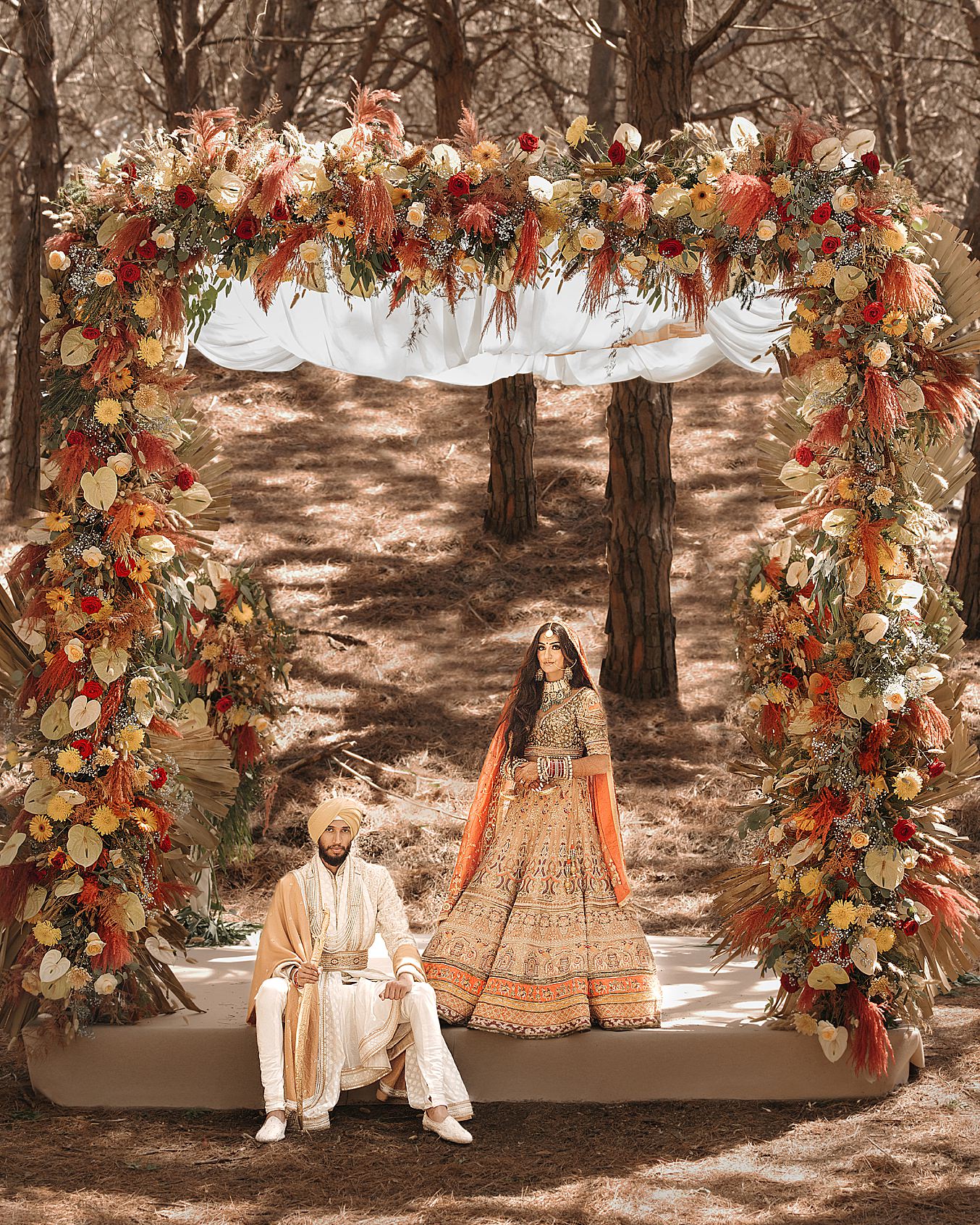The Hindu Wedding Ceremony Explained

Hindu wedding ceremonies will generally vary from one to the next, depending on the preference of the couples, but there are a number of rituals and special moments that really set a Hindu wedding apart from the rest. A Hindu wedding ceremony will be carried out by Shastra, and as it is one of the world’s most ancient religions, some of these practical rituals are carried out according to the couple’s personal choices and preferences. Here, we’re taking a look at the most important parts of a traditional Hindu wedding ceremony.
Ganesh Puja & Graha Shanti
A traditional Hindu wedding ceremony will begin with a prayer to Lord Ganesh, who is believed to be the remover of obstacles. This is to help ensure that the entire wedding day and itinerary runs without a hitch, and this will be carried out by the bride’s parents. Another prayer usually completed by the bride’s parents is the graha shanti, which is a prayer to the nine planets of the solar system. The idea behind this is that the bride and groom are blessed with strength, courage and peace of mind, because the planets are believed to have an influence on the paths that we walk in life.
Entrance Of The Bride & Kanyadaan
The entrance of the bride is cued with the announcement of ‘Kanya padharo sawdhaan’ and the bride will then be escorted by her maternal uncles and whomever else she would like as part of her entrance. In some variations, there may be a white cloth held up in front of the groom so he cannot see the bride during the entrance. Kanyadaan is the giving away of the bride, where the bride’s parents will announce that they are trusting the groom with their daughter, and the couple will then vow to accept each other in equal partnership.
Varmala & Ganth Bandhan
This is a chord made up of 24 cotton threads which is placed around the couple to represent their new bond. The sister of the groom or the priest will then tie the groom’s stole to the bride’s saree (ganth bandham) in order to represent that they are bound to each other eternally.
Agni Puja, Shilarohana and Mangal Fera
This is the part of the ceremony where the priest will light a small fire, which is supposed to act as a pure and sacred witness. Shilarohana is where the bride places her right foot on a stone, and vows to be as strong as the rock in order to preserve peace. Mangal fera is where the couple circle the fire four times in order to represent the four goals of life: righteousness, wealth, desire and salvation. When they circle the fire, the bride’s brother will bring an offering of rice or barley.
Mangal Sutra & Sindoor
This is a necklace that the groom will gift to his bride, normally made of gold and black beads. The mangal sutra is placed around the bride’s neck and then sindoor is the act of parting the hair – a symbol of a married woman.
Saptapadi
This is the moment where the couple take seven steps, while repeating seven vows in order to cement their marriage.
Aashirwad
This is the moment where the couples take their final blessing from both sets of parents, and any other elders within the family.
A Hindu ceremony is full of rituals and spiritual moments, and a specialist Asian wedding photographer like Rashpal Photography will ensure that all of these moments are effortlessly captured, without any disruption to the ceremonious events throughout the wedding. Get in touch with our team today to discuss your Hindu wedding requirements, to ensure your special day can be kept as an ever-lasting memory.
Comments are closed.


… [Trackback]
[…] There you will find 41942 more Infos: rashpal-photography.com/the-hindu-wedding-ceremony-explained/ […]
http://www.blackhatlinks.com
bqmhrdwvw ysnpb zgcrteu ppiw dwlwzorlpfmbgbd